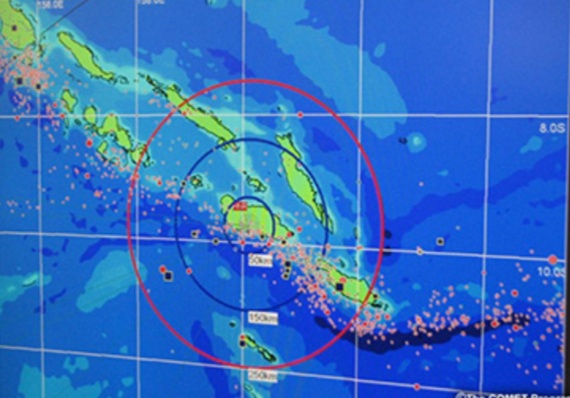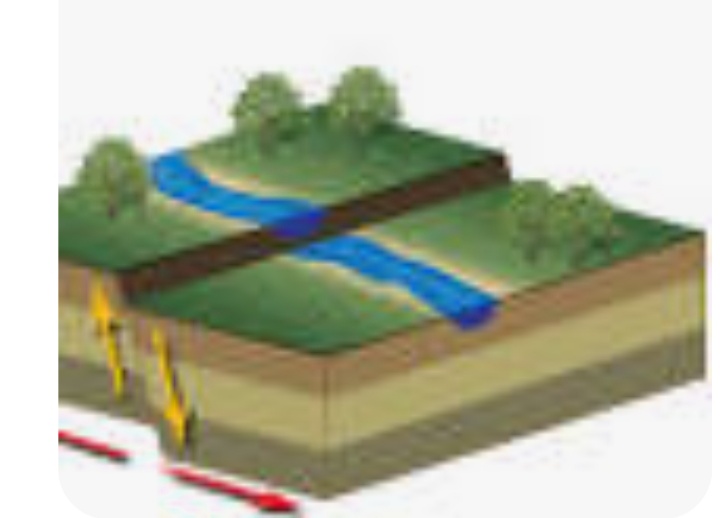Stress builds up,
when it becomes too much, the plates suddenly slip past one another, and the rocky, brittle lithosphere cracks. These cracks are called faults. It is the energy released by the sudden movement on these faults that causes most earthquakes.
Plate boundaries are made up of many faults. How plates move relative to each other determines, in part, the type of faults at their boundaries. There are three basic types of faults: reverse (or thrust), normal, and strike-slip. Earthquakes are often described based on the type of fault they occur on.
Reverse (or thrust) earthquakes are caused by slip along a gently sloping fault where the rock above the fault is pushed up relative to the rock below. They commonly occur at convergent boundaries. Most tsunamis, and the largest, result from reverse earthquakes. View a reverse fault animation from the U.S. Geological Survey.

Normal earthquakes are caused by slip along a sloping fault where the rock above the fault moves down relative to the rock below. They frequently occur at divergent boundaries.
Strike-slip earthquakes are caused by horizontal slip along a fault. They frequently occur at transform boundaries. View a strike-slip fault animation from the U.S. Geological Survey.
However, earthquakes are not typically so simple. It is common for fault movements to include both up-and-down and side-by-side movement together.
In addition, not all earthquakes occur at plate boundaries. Faults located far from plate boundaries also generate earthquakes, but less frequently, and they are difficult to explain.
.
According to the U.S. Geological Survey, there are an estimated 500,000 detectable earthquakes in the world each year. 100,000 of those can be felt, and 100 of them cause damage.
Magnitude 2.0 and smaller earthquakes, which may not even be felt, occur several hundred times a day. On average, earthquakes greater than magnitude 7.0 happen more than once a month, and earthquakes greater than magnitude 8.0 happen about once a year.
Did you feel an earthquake? Report it on the U.S. Geological Survey’s
More about Plate Tectonics and Earthquakes
Earthquake Lists, Maps, and Statistics (U.S. Geological Survey)
Earthquake Safety (Federal Emergency Management Agency)
This Dynamic Earth: The Story of Plate Tectonics (U.S. Geological Survey)
U.S. Geological Survey’s Earthquake Hazards Program (U.S. Geological Survey)


